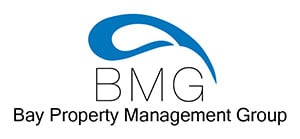The simplest answer is that self-showing technology allows showing rental property to prospective tenants to tour a property on their own and at their own convenience. Until recently, the only option available to prospective tenants was to schedule a tour with a leasing agent. This often involves a lot of back and forth between the prospect and the leasing agent to coordinate available showing times with the prospect’s schedule and availability.
How Do Self-Showings Work?
A property manager will typically place a lockbox with keys inside at vacant properties to make showings easier. To allow for self-showings, the prospective tenants would receive the code to the lockbox to retrieve the keys and tour the unit.
Of course, this can seem like a risky situation! This is where the new self-showing technology comes into play. While there are a few different options and companies offering the technology, it’s basically a combination of software and a smart lockbox which sends unique lockbox codes to prospective tenants who schedule a showing. The self-showing software offers safety features in that they require prospects to submit identification when scheduling a tour as part of the rental application process. The prospect is then run through the system to check for fraud and weed out anyone who may not have the best intentions. Once the security check has passed, the prospect will receive their unique, one-time access code.
Once the code is used to access the property, the property manager or leasing agent is notified. All of this is logged and reported so that the property manager has a history of those who accessed the property including employees, vendors, and prospects.
Upon completion of the apartment viewing, tenants place the key back in the lockbox. The system reminds them to lock up and asks them to provide feedback.
What Are the Pros and Cons of Self-Showing Technology?
Pros
- Less Coordination – agents won’t need to go back and forth with the prospective tenants to schedule showings
- Instant Gratification – tenants get to see the property as quickly as they want
- Flexibility – more flexibility in available showing times
- More Time – less coordination and driving around time means more time for other responsibilities
- Eliminate the “No Shows”
- Reduced Vanancy Time – by offering less coordination and more flexibility you may reduce vacancy time and increase revenue
Cons
- Vacants Only – you cannot allow prospective tenants to access the home with current tenants in place
- Questions – a leasing agent won’t be present to answer any possible questions that may come up
- Technology – not all renters and tech-savvy enough to feel comfortable using modern technology
- Monthly Fees – there are monthly fees associated with using the software as well as purchasing the smart lockboxes
- Risk – even with safeguards in place, nothing is 100%. There is always a risk that someone could cause damage or lose keys
Should All Landlords Offer Self-Showing Technology?
While offering self-showings can be a useful strategy for property managers and leasing agents, it’s best not to limit yourself to one option when searching for tenants in Baltimore. By offering traditional, in-person showings you have the ability to get to know your renters with questions to ask your prospective tenants and provide a higher level of customer service during the process of renting. However, for the modern renter, the convenience of scheduling a self-showing might be the way to secure the lease. Additionally, you’ll want to consider both the location and clientele of your Baltimore properties whenever you consider offering a self-showing option.
If you own a rental property in Baltimore, contact our team at Bay Property Management Group to learn more about our property management services in Baltimore.

